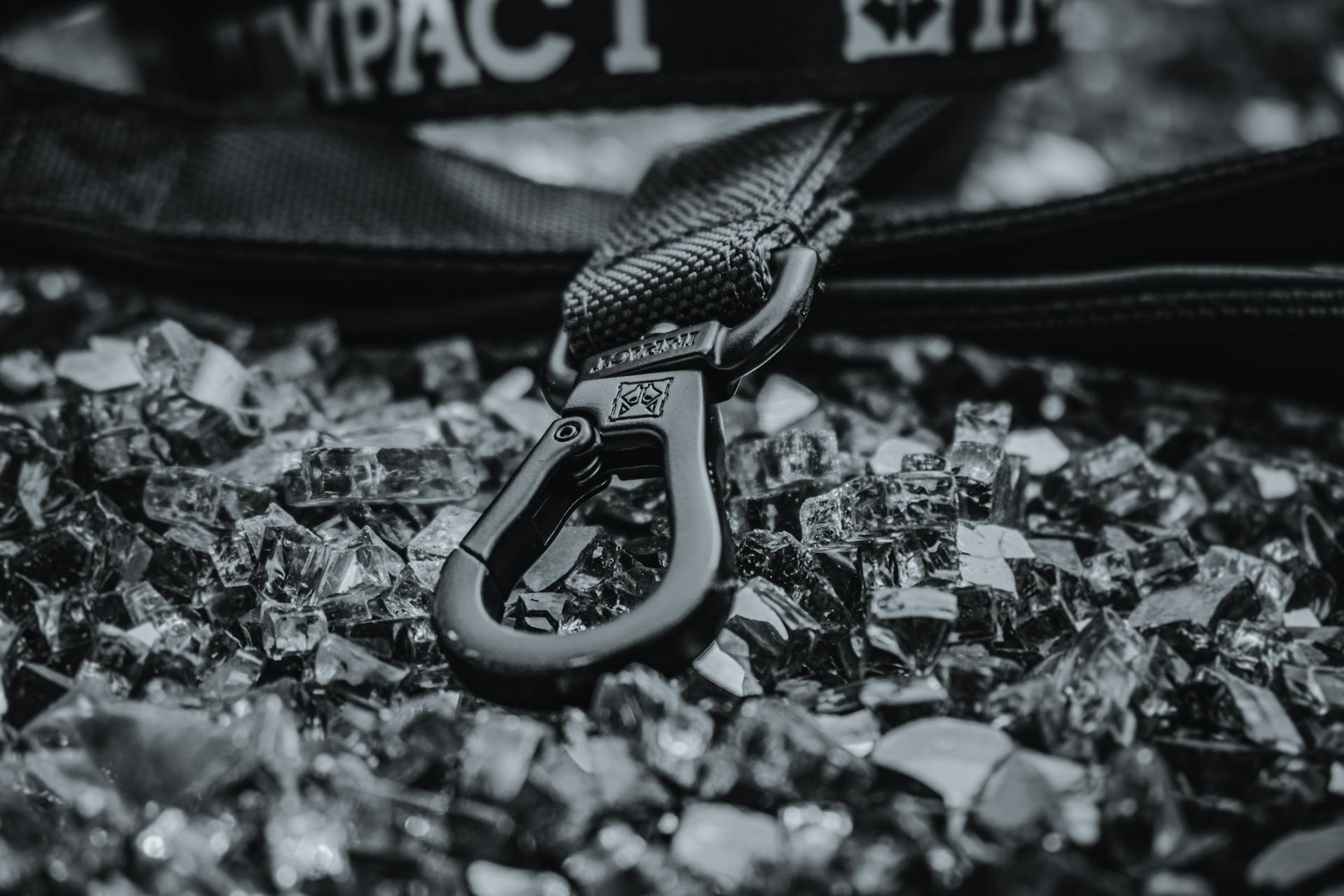
Knowing when to stop crate training is a crucial step in ensuring your dog's happiness and well-being. Crate training is a valuable tool for housetraining, reducing separation anxiety, and preventing destructive behavior, but it can also become a source of stress and confinement if overused.
Your dog's age and maturity level are key factors in determining when to stop crate training. Typically, crate training is most effective for puppies under six months old, as they are still learning to control their bladder and bowels.
Puppies usually reach a point of full maturity, around 18-24 months old, where they can be trusted to be left unsupervised without the need for crate confinement. At this stage, you can start to phase out crate training and transition to more freedom and independence for your dog.
As you gradually increase your dog's freedom, be sure to monitor their behavior and adjust your approach accordingly.
Suggestion: Should I Cover My Dog's Crate?
Setting Goals and Objectives
Understanding what you're trying to achieve is crucial before stopping crate training. Good training must always be clear and consistent, so getting the whole family on board with some common goals is the best way to ensure success.
It's essential to identify what you want the crate to be used for, such as keeping your dog safe overnight, using it when guests are visiting, or during long car rides.
Understanding Crate Training
Crate training is a process that requires patience and consistency, and every dog is different in terms of how long it takes to grasp the concept.
To ensure your dog feels safe and relaxed in their crate, they should willingly get into the crate when asked and not mind having the crate door closed.
Your dog should be able to rest comfortably in the crate for several hours if needed, without barking, whining, or howling, and not urinate or defecate in the crate.
Intriguing read: How to Train a Ferret Not to Bite?
A key goal of crate training is to teach your dog to view the crate as a safe and comfortable resting place, not a place of punishment.
To achieve this, crate training should be performed using positive reinforcement, such as offering treats or praise for good behavior.
Here are the key signs that your dog is ready to stop crate training:
- Willingly gets into the crate when asked
- Does not mind having the crate door closed
- Can rest comfortably in the crate for several hours if needed
- Does not bark, whine, or howl in the crate
- Does not urinate or defecate in the crate
- Does not view the crate as a place of punishment
Once your dog has achieved these goals, you can start to taper off the training by offering rewards intermittently, making your dog even more likely to continue performing the desired behavior.
When to Stop Crate Training
If your dog has achieved the goals of willingly getting into the crate, not minding the door being closed, and resting comfortably, it may be time to taper off your training. This means you can start to reduce the frequency of rewards, like treats or praise, as your dog becomes more comfortable with the crate.
To determine if you've reached this point, consider the following signs: your dog willingly gets into the crate, doesn't bark or whine, and can rest comfortably for several hours. If you've achieved these goals, it's likely time to start tapering off your training.
You can also look for signs that your dog has outgrown the need for the crate. For example, if your dog willingly retires to his crate before bed or when stressed, you may not need to enforce crating as much. In fact, you can try leaving the door unlocked for periods of time to see if your dog still uses the crate voluntarily.
Common Indicators to Stop Crate Training
- Barking, whining, or howling in the crate
- Scratching or chewing the crate
- Attempts to escape from the crate
- Panting while in the crate
- Restlessness, circling, or unable to settle in the crate
- Urinating or defecating in the crate
- Barking, lunging, or trying to bite when approached in the crate
- Refusal to go into the crate
If you notice any of these behaviors, it's likely time to stop crate training and reassess your approach.
Injury
Crate training is especially important when your dog is recovering from an injury. If you've let your dog's crating skills diminish over time, it's going to be a tough recovery for them.
Dogs being treated for an illness or injury often require crate rest for long periods of time. This can be a challenge for them to adjust to, especially if they've forgotten how to crate properly.
Having a familiar and welcome crate can make a huge difference in your dog's recovery. If your dog already associates the crate with a positive experience, they're more likely to seek it out for rest and recuperation instead of fighting it.
Crate training can help your dog learn to relax and calm down in a confined space, which is essential for a smooth recovery.
Stop Crate Training
If your dog is exhibiting signs of stress and anxiety in the crate, it's definitely time to stop crate training and reconsider your options. Barking, whining, or howling in the crate, scratching or chewing the crate, and attempts to escape from the crate are all red flags that crate training has backfired.
You'll know it's time to stop crate training when your dog is comfortable and relaxed in the crate, willingly gets into the crate when asked, and doesn't mind having the crate door closed. If your dog can rest comfortably in the crate for several hours if needed, and doesn't bark, whine, or howl in the crate, it may be time to taper off your training.
Before stopping crate training, make sure your dog has achieved the following goals: willingly gets into the crate, doesn't mind having the crate door closed, can rest comfortably in the crate, doesn't bark, whine, or howl in the crate, doesn't urinate or defecate in the crate, and doesn't view the crate as a place of punishment.
To stop crate training the right way, you can start to taper off the training by offering rewards intermittently. This unpredictable pattern of reinforcement will make your dog even more likely to continue performing the desired behavior.
Expand your knowledge: How to Use Bark Collar
Crate Training Basics
Crate training is a great way to start with your puppy, as it helps with potty training and prevents destructive behavior. Puppies can hold their bladder for about one hour for each month of age, so a crate can be a lifesaver.
Crate training should be used in conjunction with regular exercise and potty breaks, not as a replacement for them. A crate that's too small can be uncomfortable for your puppy, so make sure it's at least 12 inches longer than your puppy is long.
Puppies need to be crate trained gradually, starting with short periods of time and gradually increasing the duration. Crate training can help with separation anxiety, but it's not a cure-all.
Crate training should be used consistently, with a regular schedule for feeding, exercise, and potty breaks. This will help your puppy learn what to expect and when.
Expand your knowledge: When Do Dogs Stop Being a Puppy
Sources
- https://www.akc.org/expert-advice/training/why-crate-training-is-great-for-your-dog/
- https://paws.org/resources/how-to-crate-train-your-dog/
- https://smartdoguniversity.com/dog-training-ask-the-trainer-when-can-i-get-rid-of-the-crate/
- https://www.petsradar.com/advice/when-to-stop-crate-training
- https://www.cuteness.com/article/stop-crate-training
Featured Images: pexels.com


